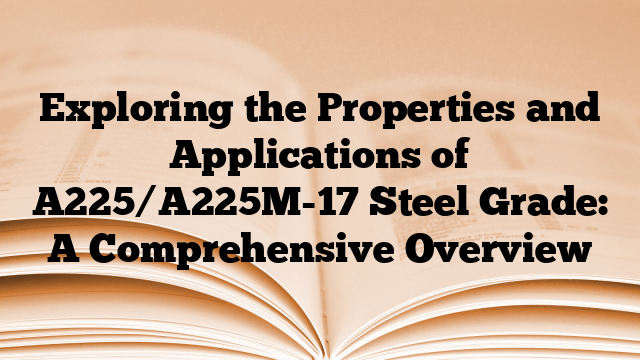The A225/A225M-17 steel grade is a carbon-manganese-silicon steel plate intended for welded pressure vessels in low to moderate temperature service. This steel grade is specified in ASTM A225/A225M-17, which is the standard for pressure vessel plates, alloy steel, manganese-vanadium-nickel.
The chemical composition of A225/A225M-17 steel grade includes carbon (C), manganese (Mn), silicon (Si), phosphorus (P), sulfur (S), nickel (Ni), chromium (Cr), molybdenum (Mo), vanadium (V), and aluminum (Al). The carbon content is typically low, ranging from 0.22% to 0.28%. Manganese is added as a deoxidizer and also contributes to the strength and hardenability of the steel. Silicon enhances the strength and toughness of the steel. The presence of nickel, chromium, molybdenum, and vanadium enhances the high-temperature properties of the steel.
The mechanical properties of A225/A225M-17 steel grade are specified in the standard. It has a specified minimum yield strength of 315 MPa (45 ksi) and a minimum tensile strength of 520-690 MPa (75-100 ksi). The elongation after fracture is specified as a minimum of 18%.
A225/A225M-17 steel grade is primarily used in the fabrication of welded pressure vessels intended for moderate temperature service. These pressure vessels can be used for various applications such as storage tanks, boilers, heat exchangers, and reactors. The steel grade is suitable for temperatures ranging from -50°C (-58°F) to 345°C (650°F) depending on the thickness and specific requirements.
In conclusion, A225/A225M-17 steel grade is a carbon-manganese-silicon alloy with added elements such as nickel, chromium, molybdenum, and vanadium. It has excellent high-temperature properties and is commonly used in the fabrication of welded pressure vessels for moderate temperature service. Its mechanical properties and chemical composition are governed by the ASTM A225/A225M-17 standard.

